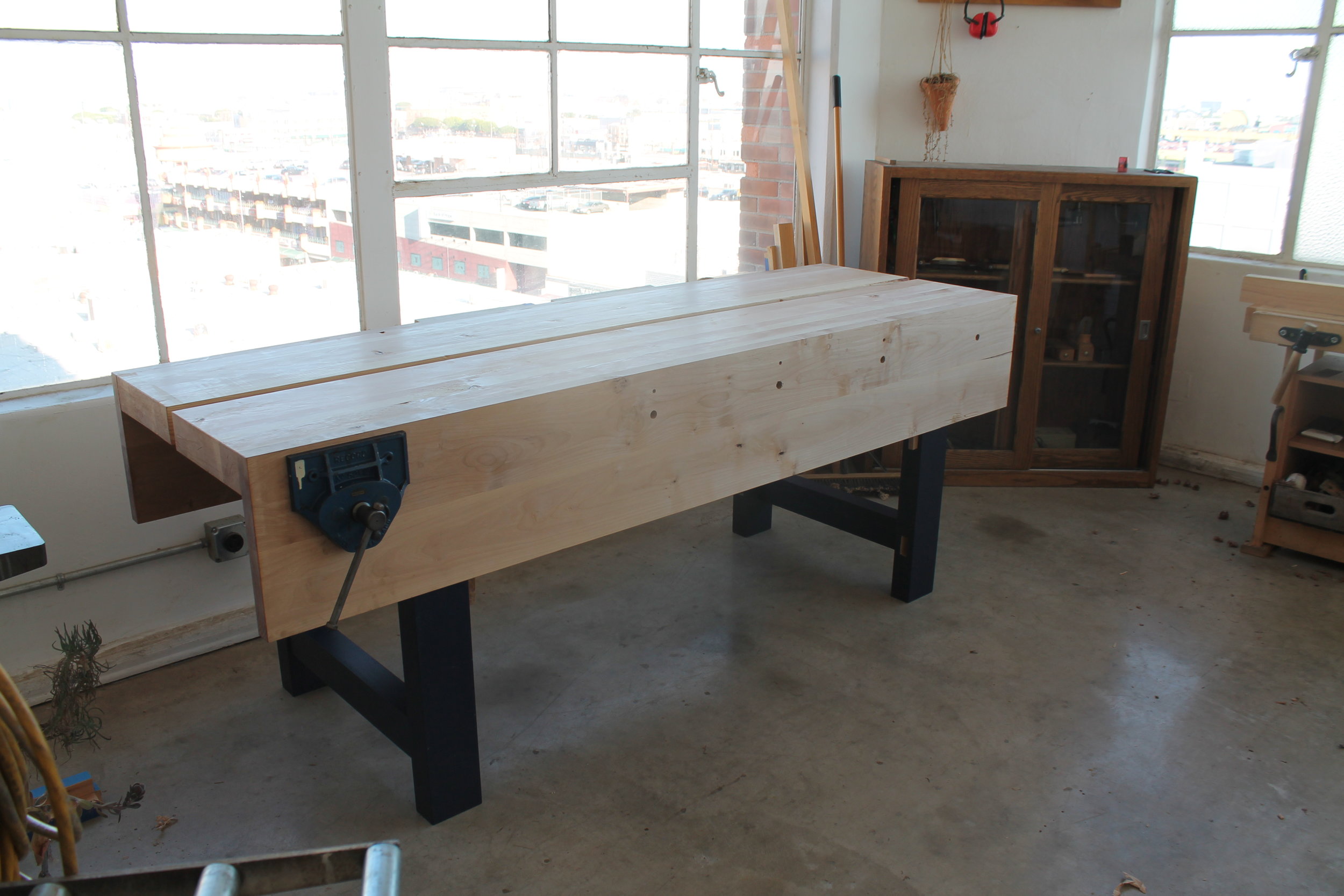Building a bench is a demanding, laborious task. The parts are heavy and, once it’s together, the result is a behemoth, at least in my case. Then you have to plane it flat and install a heavy steel vise or two. To tell the truth I knocked my bench together and then privately celebrated by letting it sit unused and in the way in the middle of the assembly area of my shop. It actually started to become an issue once I had an order of larger pieces to build. A friend dropped by and we relocated it to its intended space along one wall.
But it still wasn’t done. In its present state the bench was just a massive table, and so it would remain until I gathered the resolve to stay late one evening and plane the top, install the vise and drill holes for the bench dogs. I also decided to paint the base. Three species of wood had gone into building the bench and there was too much going on visually. I figured by painting the base in a navy blue the stark contrast of the color would unify the alder aprons and fir top. It worked, I think. Well anyway I had some paint that had been laying around so no money was lost.
Flattening the top was pretty straightforward; the fir was easy under my old Stanley no. 6 plane. In a couple of hours I had it flat enough for my taste. I’ve never been one for flattening tops to within a thousandth of an inch, nor have I understood the inclination. Installing the vintage Record vise, which should have been straightforward, proved otherwise. I was able to disassemble it easily enough, then drilled holes in the apron that would allegedly correspond with the lead screw and stabilizing bars. In theory, all that was left was to slide the front of the vise into the back that was mounted under the bench top.
flattening the top-a chore best done when not tired
Not the effortless task I had imagined. I tried it every which way and the damn thing-which was heavy-would not slide in. I finally realized the holes were a hair too small. A ridiculous situation considering there was no benefit to having closely sized holes, they would never be seen. I chiseled away the offending wood and eventually slid the vise home.
the vintage Record vise, made in England
Finally all that was left was drilling holes in the 3 1/4” thick top for the bench dogs and holdfasts (devices that hold a work piece steady while planing, chopping, etc.). Once I located my 3/4” auger bit the job was a cinch. Within an hour I’d laid out and bored 28 holes all the way through.
So now, 5 years after purchasing lumber for the base, I have completed a proper workbench that will last the rest of my career and lifetime. Hopefully I’ll pass it to the kids, once I have some that is. Although there are a few changes I’d make to the design; I’ll probably start another in the coming year to be complete in 2024.



